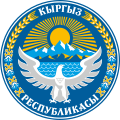Batken conflict
| Batken conflict | |||||||
|---|---|---|---|---|---|---|---|
 | |||||||
| |||||||
| Belligerents | |||||||
|
|
| ||||||
| Commanders and leaders | |||||||
|
|
| ||||||
| Strength | |||||||
| several hundred soldiers | more than 1,000 militants | ||||||
| Casualties and losses | |||||||
| 32 civilians and soldiers | 1,150 militants | ||||||
The Batken conflict (
Background
In February 1999, the Uzbek capital of
Events
In the summer of that year, IMU guerrilla rebels invaded the
On 24 August, defense minister
Aftermath
Following the conclusion of the conflict, the Uzbek government began the process of sealing its border with Kyrgyzstan, enacting measures such as constructing a barbed wire fence and creating a 2-meter (6.67-foot) fence throughout 1999 and 2000. The Uzbek government also hinted at a military intervention in the country, with defense minister
The conflict also had a major impact on the international community, who collectively put pressure on Tajikistan to expel the IMU from the country, specifically the Tavildara Valley where it is based. The IMU eventually abandoned the valley in late 1999 after persuasion from the Islamic Renaissance Party of Tajikistan (IRPT).
See also
- Post-Soviet conflicts
References
- ^ Абытов Байболот Капарович (2014-10-29). "Баткен 1999 год: события или война?". Мнение. АКИpress. Мнение. Retrieved 2019-04-21.
- ^ Нурбек Омуралиев, Айнура Элебаева. "Баткенские события в Кыргызстане. Хроника событий". Central Asia & Central Caucasus Press AB. Retrieved 2019-04-21.
- ^ "Batken Conflict Returns". iwpr.net.
- ^ "Kyrgyz Troops Kill 10 Gunmen in Hostage Crisis". Los Angeles Times. August 25, 1999.
- ^ "GROWING INTERNATIONAL RAMIFICATIONS OF THE ISLAMIC INSURGENCY IN KYRGYZSTAN". Jamestown.
- ^ "Bad neighbors, bad fences". March 15, 2000. Archived from the original on September 25, 2000. Retrieved 2019-04-20.
{{cite web}}: CS1 maint: unfit URL (link) - ^ "Баткенская область - Регионы - О Кыргызстане - Добро пожаловать в Кыргызстан!". www.welcome.kg.
- ^ Megoran (2004), op. cit., p 733-734.

